If you are new to the matcha world, you may be wondering how to determine high quality matcha from lower quality matcha. What is the difference when it comes to good vs bad quality matcha? Will the health benefits be compromised with the lower grade matcha?
When i first discovered the joys of matcha I also stumbled upon an entire world of matcha grades and wanted to dive into the differences and learn exactly what to use and how it would benefit me. I spent countless hours studying, exploring, and experimenting with a variety of different types and gathered all of the information along the way.
We've got you covered with answers to all of your matcha questions! This article will discuss the differences in color, taste, texture, how it is made, where it is sourced, what to look for, and what to use the different grades of matcha for!
Jump to:
What is Matcha?
Matcha is a tea drink that is uniquely made from green tea leaves ground into a fine powder. Matcha dates back to the early Tang Dynasty in China. The ceremonies around the process of preparing a cup of matcha are very meditative in nature.
Subsequently, the tradition and methods of preparing matcha were shared with Japan in the 14th century.
Ever since matcha took off and became a staple tradition in Japanese culture. To this day, Japanese matcha is considered the gold standard supplier of matcha and is exported around the world.
Matcha is a specialty tea made from green tea plants (camellia sinensis) in a delicate process that has been perfected for centuries. It is grown away from direct sunlight under shade trees in just the right climate.
The shading process is the key step to curating matcha and is what sets it apart from typical green tea. The quality of matcha tea is directly related to the manufacture of matcha processes.
The process cannot be rushed, delayed, or altered in order to put out a greater quantity faster, or else the quality is compromised.
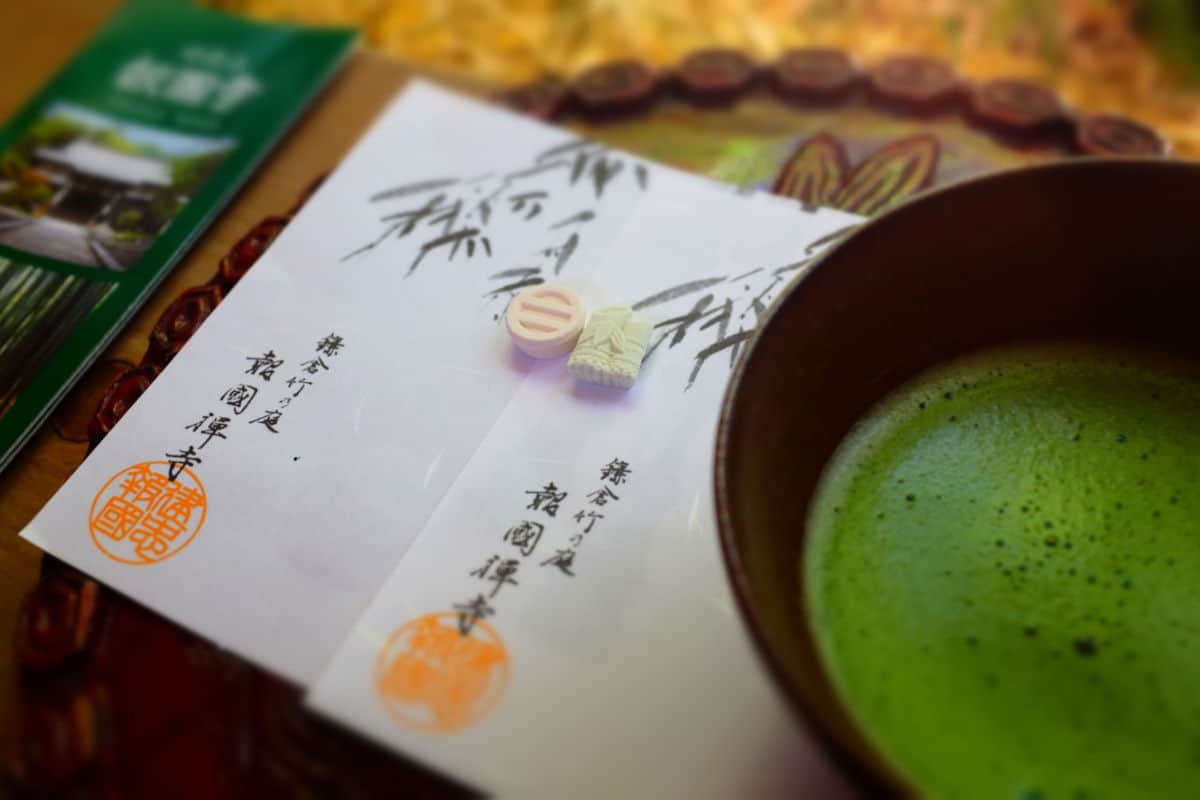
Matcha Tea Ceremony
The Japanese tea ceremony consists of a matcha bowl and a bamboo whisk with several tines that stick out of a rounded holder.
The powder (about ½-1 tsp) is first gently whisked in the bowl to separate. Then, hot water (approximately 2-3 ounces, heated to 180 degrees Fahrenheit) is added to the bowl and the whisk is used to blend the powder with the water.
A good quality matcha will produce a nice froth on the top of the drink. Only a very small amount of liquid is used to mix with the powder.
Avoid using too much water as it will not produce the froth that good Matcha is known for.
Grades of Matcha
Matcha traditionally comes in two distinct grades: ceremonial grade and culinary grade matcha.
There may be different marketing labels or modifiers within the spectrum of ceremonial grade or culinary grade that must be paid attention to. You might notice a product that says "ceremonial blend" or "latte grade". Ceremonial blend refers to the first and second harvests combined.
You will also notice "organic matcha". means that the cultivation process used followed USDA organic guidelines.
Latte grade is usually a form of food grade matcha that is probably a blend that is a bit more bitter.
Manufacturers call it latte grade because it tastes best when mixed with warm milk instead of water which gives it a creamier and smoother taste. This is called a matcha latte.
Coconut milk and Oat milk work really well with the matcha flavor!
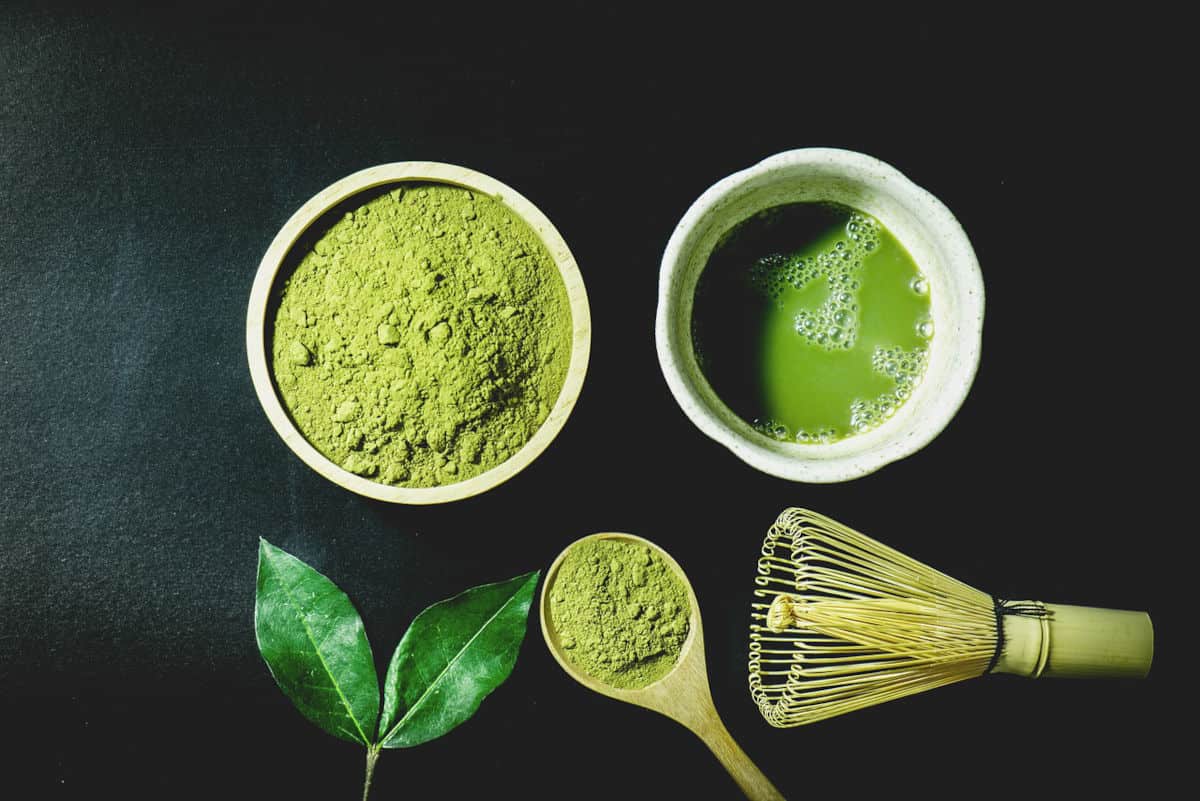
Ceremonial Grade Health Benefits
Ceremonial grade matcha is the highest quality matcha. It is made with the first harvest of matcha tea plants at just the right time. At this time the leaves have the highest concentration of chlorophyll due to their vibrant green color kept out of direct sunlight.
The shading process also helps to cultivate a higher concentration of the calming amino acid, L-theanine.
L-theanine is one of the most popular aspects of matcha green tea because it helps to subdue the stimulating effects of the naturally high occurrence of caffeine in matcha.
It promotes laser-sharp focus and sustained energy throughout the day. Green tea is also famous for its high level of antioxidants, specifically EGCG.
This potent antioxidant is known for its weight loss, heart health, brain health, anti-aging, and anti-inflammatory benefits. Studies have shown that high grade Matcha green tea has at least 3 times the EGCG in it than traditional green tea!
The chlorophyll in ceremonial matcha powder is a potent health booster as it is purported to help increase red blood cells, speed healing, neutralize toxins, prevent and slow the growth of cancer, and so much more.
These incredible nutrients are just the tip of the iceberg when it comes to the health-boosting power of matcha!
Culinary Grade Matcha
Culinary grade is intended for use in lattes, smoothies, ice cream, and baked goods. It works well and tastes great when prepared in this way. You can drink culinary grade matcha with just hot water, but once you taste the difference of ceremonial grade, you won't want to turn back!
While the very first most delicately cared for harvest will have a naturally sweet taste, the Culinary matcha is cultivated after the first harvests where the leaves likely have been exposed to slightly more sunlight. These factors affect the quality, color, taste, and nutrient content.
The culinary grade varies from decent to poor quality.
Higher quality culinary grade is considered "premium matcha" which is likely the same or similar to the ceremonial blend mentioned before. It is likely the second or third batch and contains much of the same nutrients as found in ceremonial grade.
Low quality matcha is harvested much later in the life cycle of the leaves and less care is taken in the process of grinding the green tea powder. This lack of care is shown in the quality of the product that we will discuss in more detail below.
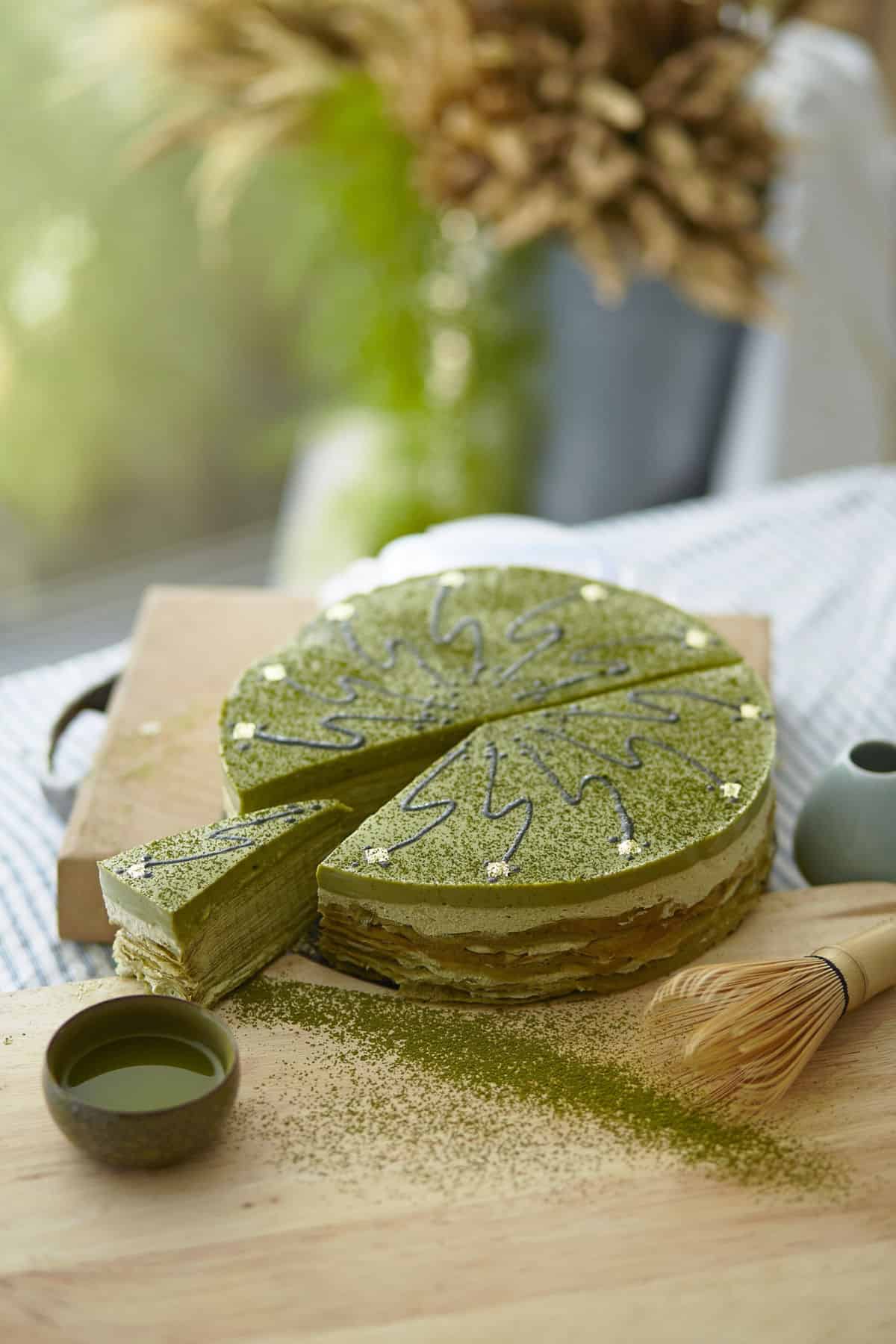
How to Tell the Difference
Price
One of the very first indicators of quality is almost always the cost. Quite a lot of work, time, and care goes into the process of cultivating high quality matcha and it is definitely reflected in the cost.
The best matcha powders have incredible health benefits and top-tier taste. Many consider the cost to be well worth it.
Ceremonial grade matcha typically runs $30-40 per ounce. You may find a variety of cost differences ranging from higher to lower.
Premium matcha or ceremonial blend (a blend of first and second harvests) may save you some money being closer to $15-20 per ounce.
Cheap matcha can range from $5-15 per ounce. While this price point is attractive, it almost always indicates a sub-par product.
If you want to try matcha for the first time, we recommend trying the best, so you can get a good feel and taste for what the best matcha is really like!
Color, Taste, and Smell
The best quality matcha is ceremonial grade. It is known for its bright green color and sweet and smooth taste. It will also give a mild vegetal smell.
Poor quality matcha will have a duller green or almost brown color and an astringent flavor or bitter taste. This is because it has less L-theanine. L-theanine gives not only nutritional benefits but also a sweet flavor.
Texture and Consistency
High-quality matcha has a very fine texture and silky feel similar to that of baby powder. The reason for this is the particle size of the powder is very fine, approximately 5-10 microns. The lower quality matcha has larger particles which result in a coarser feel.
Origin
Check the packaging and research the company.
Ceremonial grade from Japan is the best quality. You may find types of matcha that claim to be from other parts of the world such as China or Korea. Authentic matcha is from Japan and is primarily grown in the regions of Uji (Kyoto), Kagoshima in Kyushu, Fukuoka in Kyushu, Shizuoka, and Nishio in the Aichi prefecture. Each of the region's matcha powders is said to produce different flavor notes.
Check the Label for the Grade
As mentioned above, Check for the words premium matcha, ceremonial blend, latte grade, food grade, and culinary grade. Each of these is an indicator of less-than-ceremonial grade quality.
Ceremonial grade matcha is the highest quality matcha is the best of the best. If you find organic ceremonial grade, it is likely even better!
Recommendations
 Naoki Matcha Chiran Harvest...Shop on Amazon
Naoki Matcha Chiran Harvest...Shop on Amazon
 MatchaMaku-HAYAMI 30 g. Sup...Shop on Amazon
MatchaMaku-HAYAMI 30 g. Sup...Shop on Amazon
 ORGANIC CEREMONIAL Matcha G...Shop on Amazon
ORGANIC CEREMONIAL Matcha G...Shop on Amazon
 PANATEA Certified Organic M...Shop on Amazon
PANATEA Certified Organic M...Shop on Amazon
 Ujido The Path of Zen Japan...Shop on Amazon
Ujido The Path of Zen Japan...Shop on Amazon
Whether you prefer the top-tier caliber of ceremonial-grade matcha or enjoy cooking up delicious creations with a culinary grade, we hope that you now feel better equipped to make the most informed choice when it comes to matcha! Let us know in the comments what your favorite matcha is and what you like about it most!
Have a healthy day!
Natalie

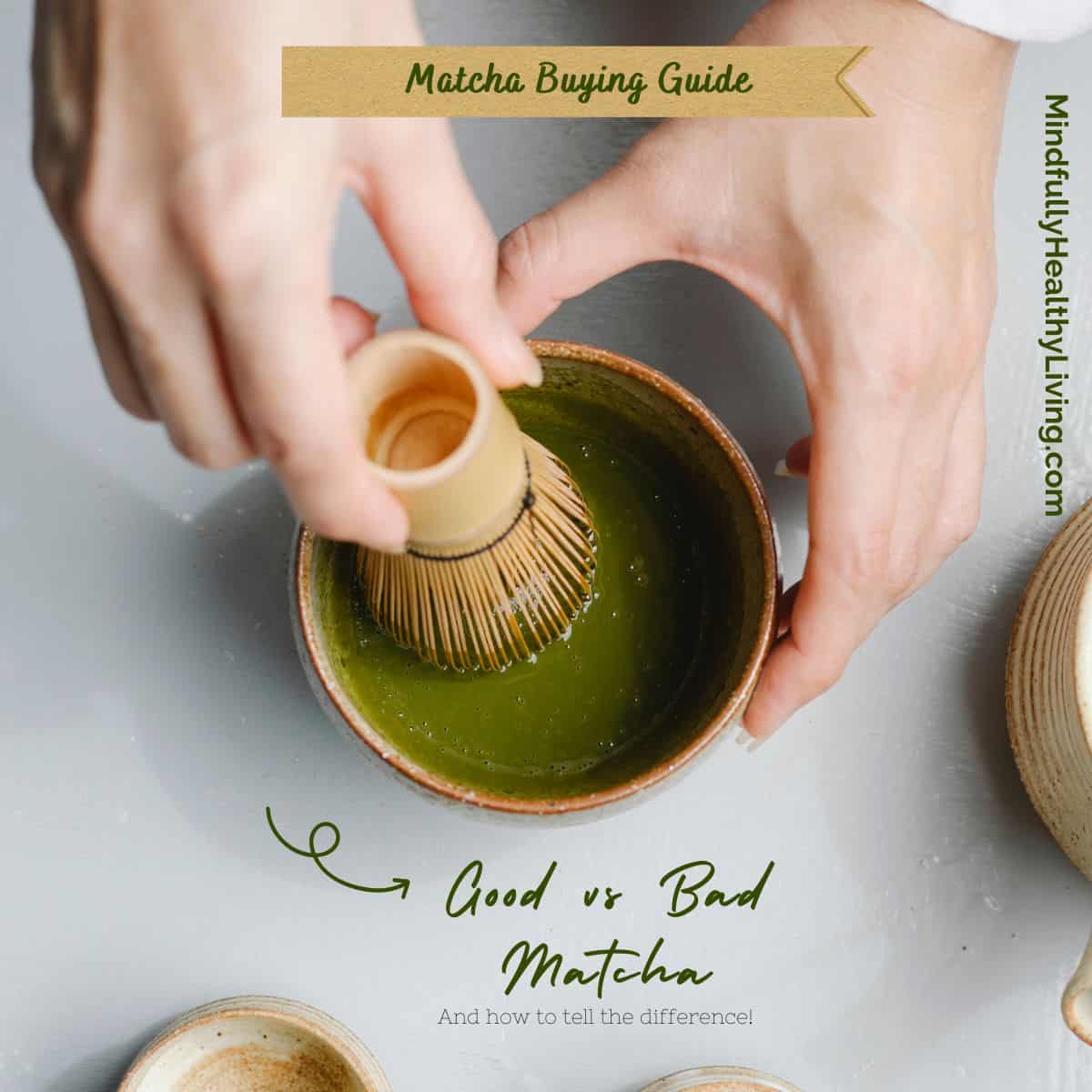
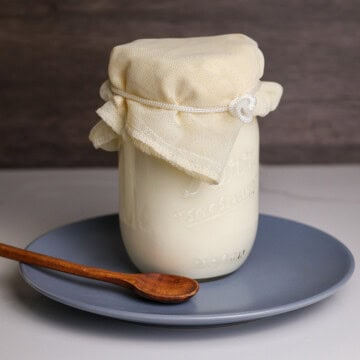
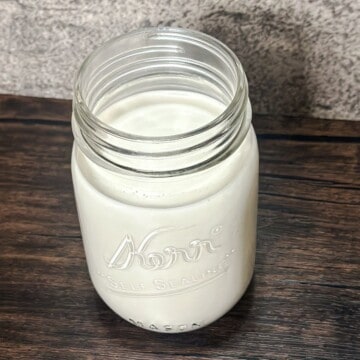
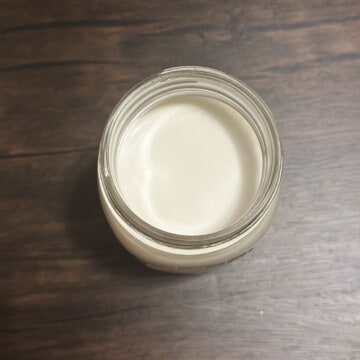
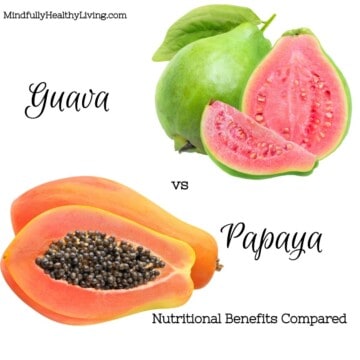
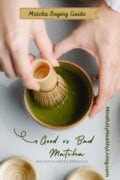
Comments
No Comments